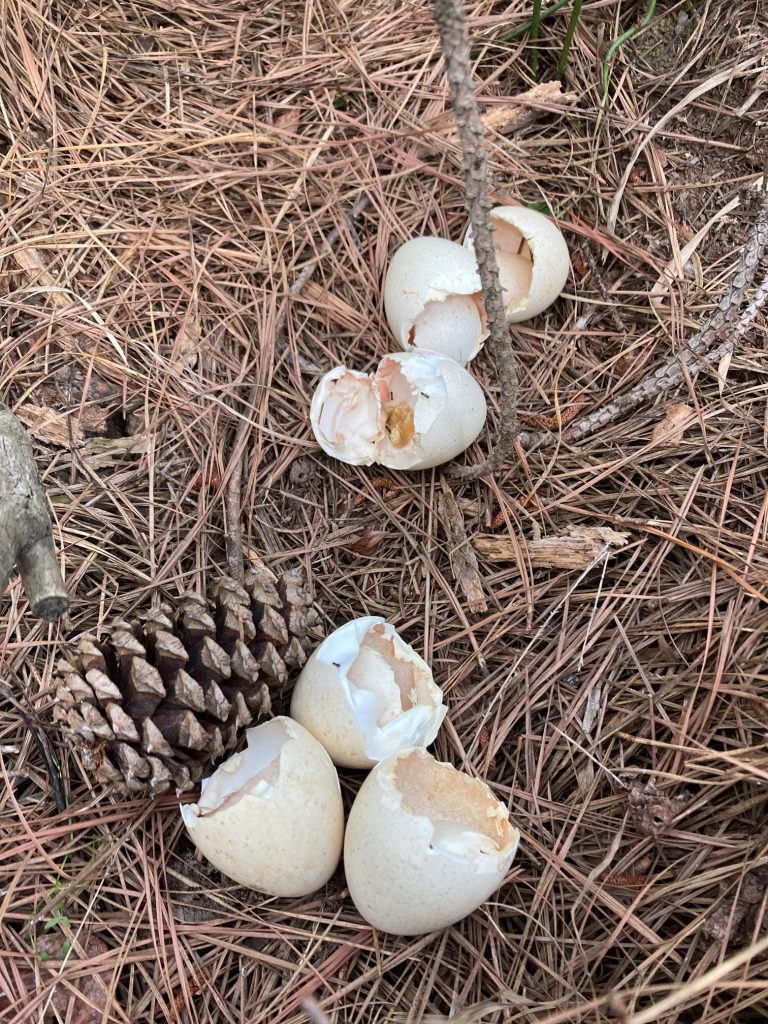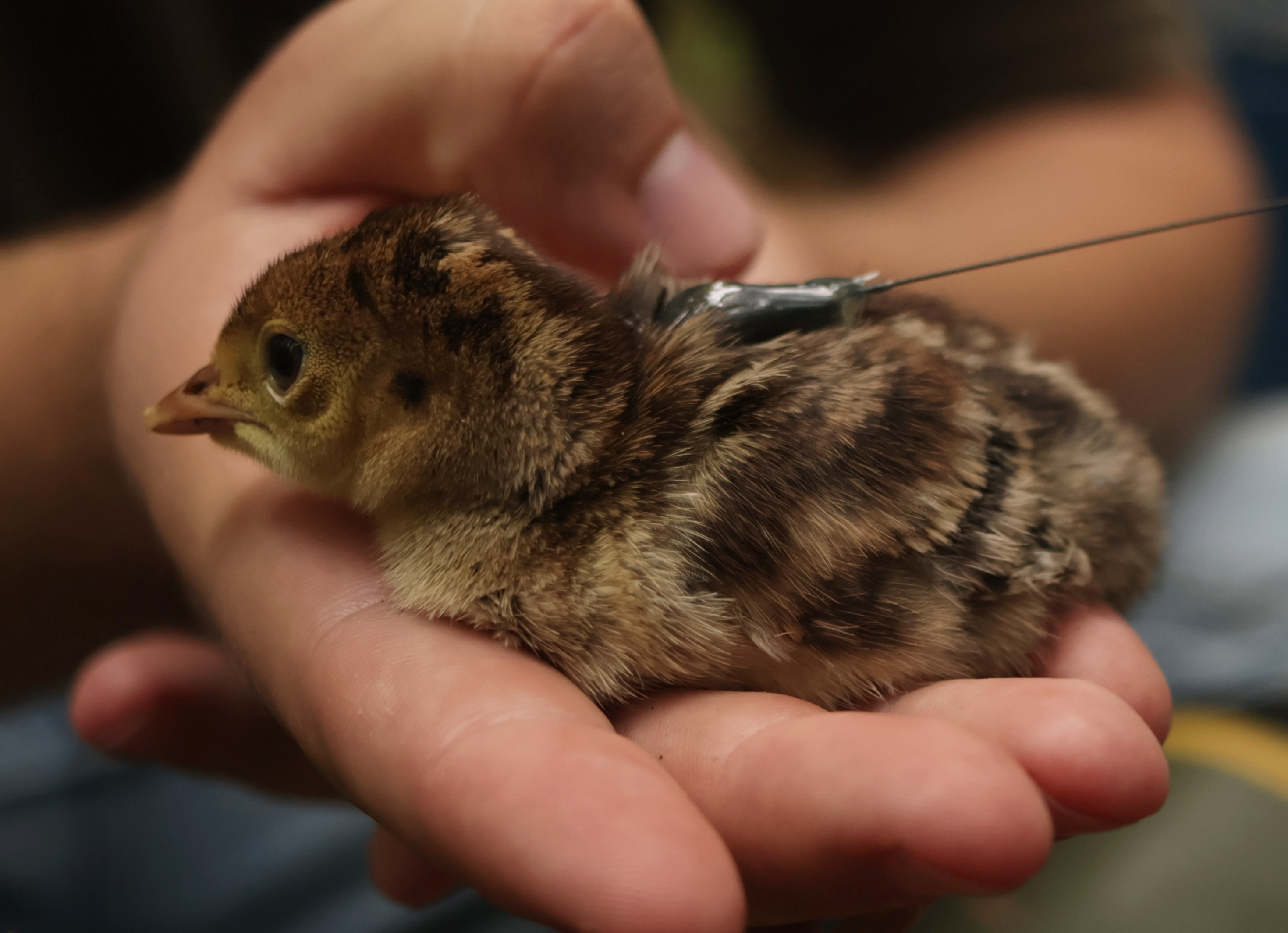Wild Turkey Research Investigates Population Decline in Oklahoma
As part of its 2023 commitment to wild turkey research, the NWTF has granted funding to an ongoing research project in Oklahoma.
Previously funded by the NWTF Oklahoma State Chapter, this five-year wild turkey research initiative conducted by Oklahoma State University and the Oklahoma Department of Wildlife Conservation aims to understand the decline of the wild turkey and brood survival in the state. Through monitoring hen survival, poult survival, habitat selection and exposure to disease, researchers are taking a comprehensive approach to understand these issues at a deeper level.
The significance of this research lies in its potential to enhance wild turkey populations in Oklahoma, as evidenced by the decrease in poult production, which suggests a brood survival rate below what is considered sustainable. Brood survival serves as a critical indicator of a balanced and sustainable wild turkey population. According to the ODWC, a poult-per-hen ratio of less than two indicates a decline in the population.
The project, led by Colter Chitwood, Assistant Professor at Oklahoma State University, will provide essential data to assist the ODWC and other wildlife managers in effectively managing wild turkey populations. This information will serve as a guide for habitat management and population management to increase wild turkey production and survival.
Beyond Oklahoma, the research outcomes will have broader implications for the southeastern region of the United States. The data will contribute to a deeper understanding of the factors contributing to the decline in wild turkey populations in this region.
During the five-year duration of the project, currently in its third year, Eastern wild turkeys will be captured using rocket nets, while Rio Grande wild turkeys will be captured using walk-in traps. This capture process will take place during the late winter, before the spring turkey hunting season. Each captured turkey will then undergo a series of tests and sample collections by the research team, including blood and cloacal swabs for disease testing. A uniquely numbered riveted leg band will also be attached to the right leg of each captured turkey and include a phone number to report recovered bands.

The key data for the research project will be derived from the information collected via transmitters attached to female wild turkeys. Signals from the hens provide crucial information to Chitwood and his team, including the turkeys' behaviors, movements and habitat preferences, especially nest site locations.
“If a hen is found to be off the nest, then the nest contents will be checked, number of eggs counted, and evidence of predation or scavenging collected,” Chitwood said. “Once a hen has hatched or failed (determined by presence of eggs or egg fragments), the contents will be collected for genetic analysis. The number of hatched, failed, or depredated eggs will be recorded for each nest.”

In addition to monitoring hens, the researchers will also keep track of the survival of their offspring using smaller transmitters.
“Within two days of successful hatches, we will locate the brooding hen at sunrise and flush her from the brood,” Chitwood said. “We will search the entire area both visually and with a handheld FLIR (forward-looking infrared technology) and capture each poult. We will attempt to capture all poults as estimated from the number of successfully hatched eggs. We will attach a very small, suture-style transmitter with an expected battery life of 60 days to the back of the poult.”
After equipping all poults with transmitters, the entire brood will be placed on the ground, directly adjacent to the capture point, within dense cover. Subsequently, the research team will leave the area, giving the hen the opportunity to relocate and care for the poults. At least three times per week, they will locate the hens using these transmitters, allowing them to closely observe the hen's movements and behavior while brooding the poults.
“Once located, we will scan all poult frequencies to determine presence,” Chitwood said. “Present poults will be assumed to be alive. Missing poults will be searched for between the hen’s last locations to determine fate.”
The 2023 funding will give additional support to this ongoing wild turkey research, enabling researchers to add more GPS transmitters to the study, allowing the monitoring of more females. Additionally, the funding will allow for testing blood serum chemistries for evidence of physiological condition, organ function, or disease screening of wild turkeys.
This project is one of 10 new research projects across nine states the NWTF is funding, with $582,374 invested among these vital projects. These projects are part of a nearly $9 million investment into wild turkey research in 2023, supported by the NWTF and its partners.
